The haunting images by Arthur Rackham (1867-1939) in children’s fairy tales at the turn of the 20th century evoke a sense of mystery, even nightmare, in compositions that include twisted undergrowth, sinister characters and menacing backgrounds.
Take this illustration for ‘The trees and the axe’ from Aesop’s fables, for example. It creates a sense of imposing malevolence.
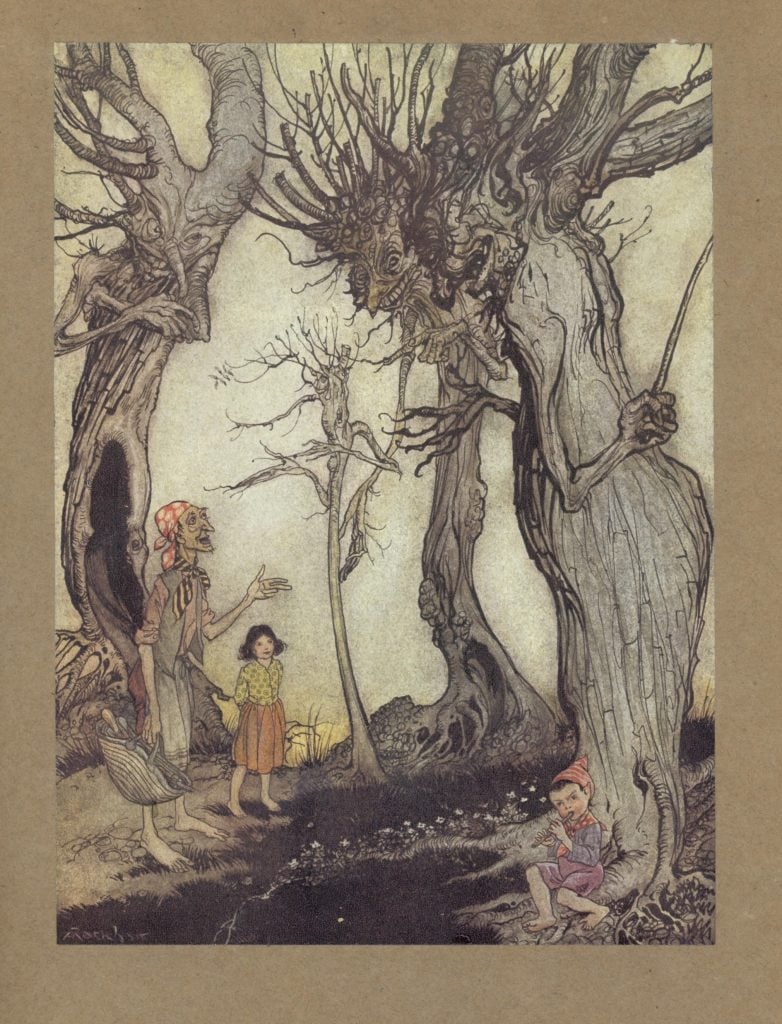
The trees and the axe, from Aesop’s fables
Rackham was born and schooled in London. He had a brief interlude in Australia in 1884 during a recuperative journey to address his delicate health. On returning to London, he enrolled in night classes at the Lambeth School of Art. From the late 1880s, Rackham exhibited his watercolours at the Royal Academy while his regular contributions to illustrated magazines, advertisements and book publishers until the turn of the century were black and white drawings. Subsequently, it was his colour illustrations, in combination with his interest in the fantastic nature of texts, that established Rackham’s reputation as the foremost early 20th century illustrator of children’s books.
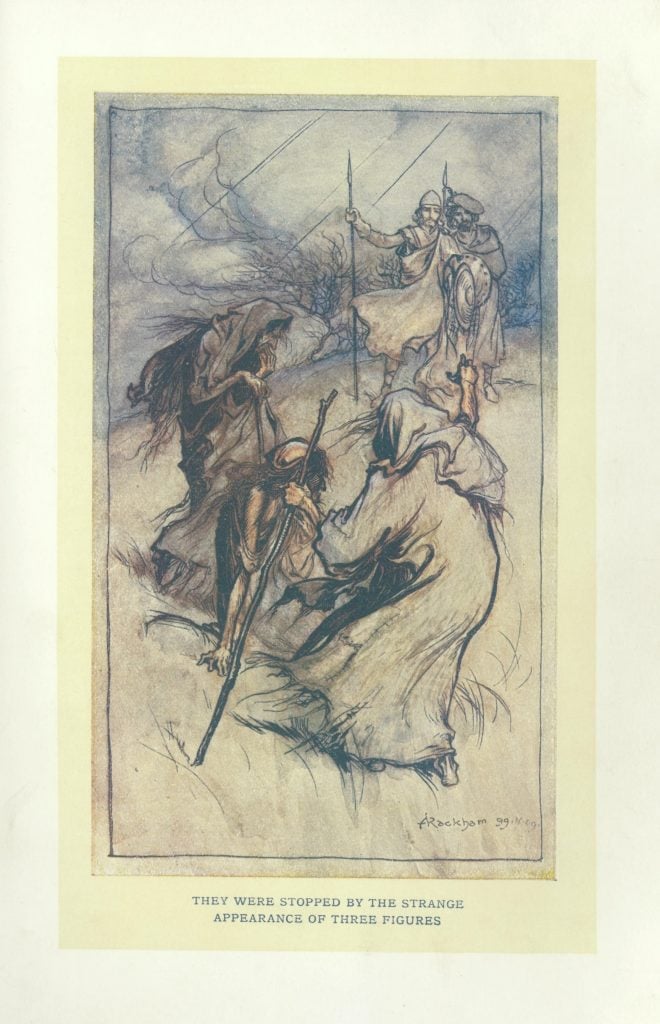
‘They were stopped by the strange appearance of three figures’, in Macbeth, from Tales of Shakespeare
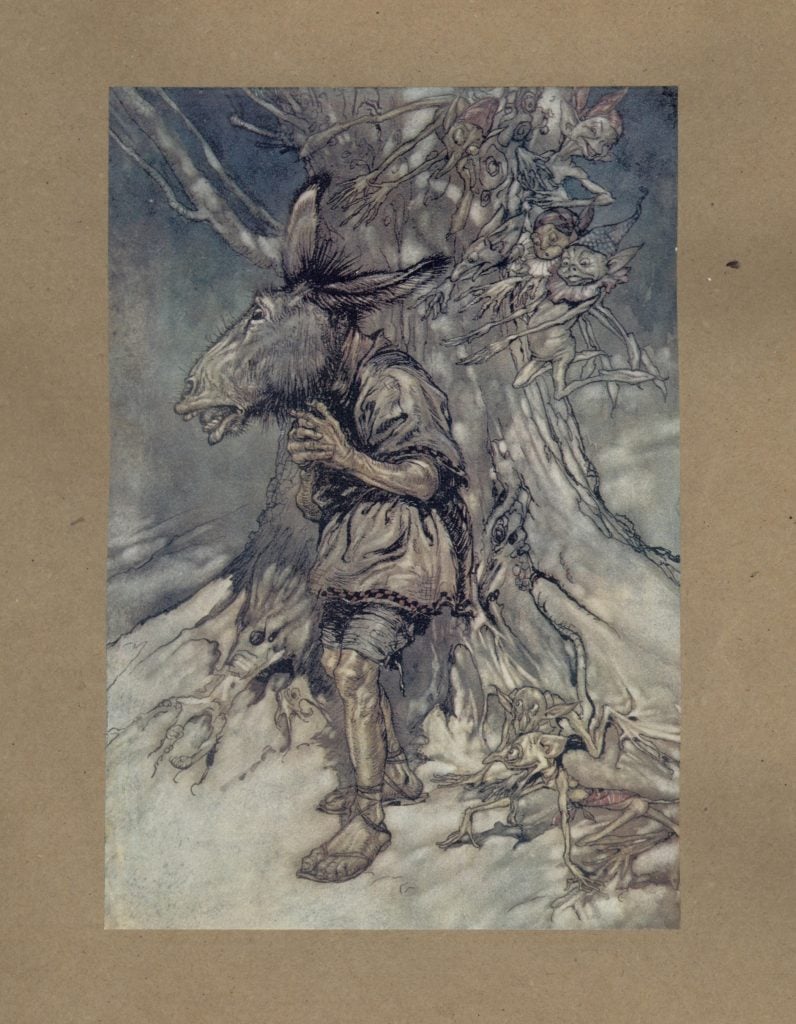
Puck says ‘I will sing, that they shall hear I am not afraid’, from A midsummer night’s dream, in Tales of Shakespeare
One of Rackham’s early career successes were his illustrations for Tales from Shakespeare. Shown here are his illustrations for ‘Macbeth’ and ‘A midsummer night’s dream’.

Frontispiece of Alice, in Lewis Carroll’s Alice’s adventures in Wonderland
He brought his unique interpretation to all the children’s books he illustrated. His Alice in Alice’s adventures in Wonderland by Lewis Carroll reshapes Tenniel’s younger Alice as an adolescent.
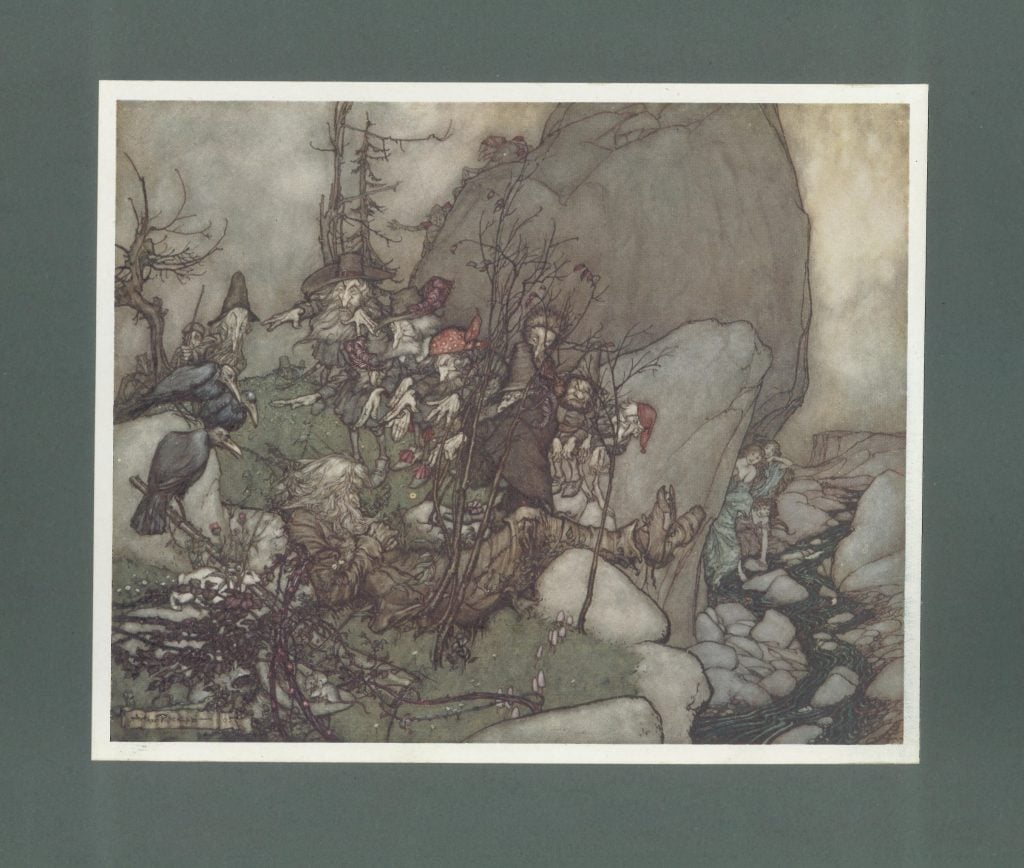
The sleep of Rip Van Winkle, from Rip Van Winkle
But the book that truly established Rackham as the leading decorative illustrator of the Edwardian era was his edition of Rip Van Winkle, containing 51 colour plates of forest scenes, children and fairies, first published in 1905. Simultaneous publication of trade and deluxe editions and an exhibition of all the originals at the Leicester Galleries in London, ensured his reputation would remain sought after for over 30 years.
Washington Irving’s story Rip Van Winkle is set in New York’s Catskill Mountains. There Van Winkle lives in a pleasant village but his preoccupation with telling stories while roaming the countryside sees his house fall into disarray. One day he wanders into the mountains and shares a drink with a group of bearded men. Afterwards he falls asleep for over 20 years and, when he wakes, he returns to his village and is taken in by his own, now adult, daughter.

Frontispiece, from Hansel and Gretel
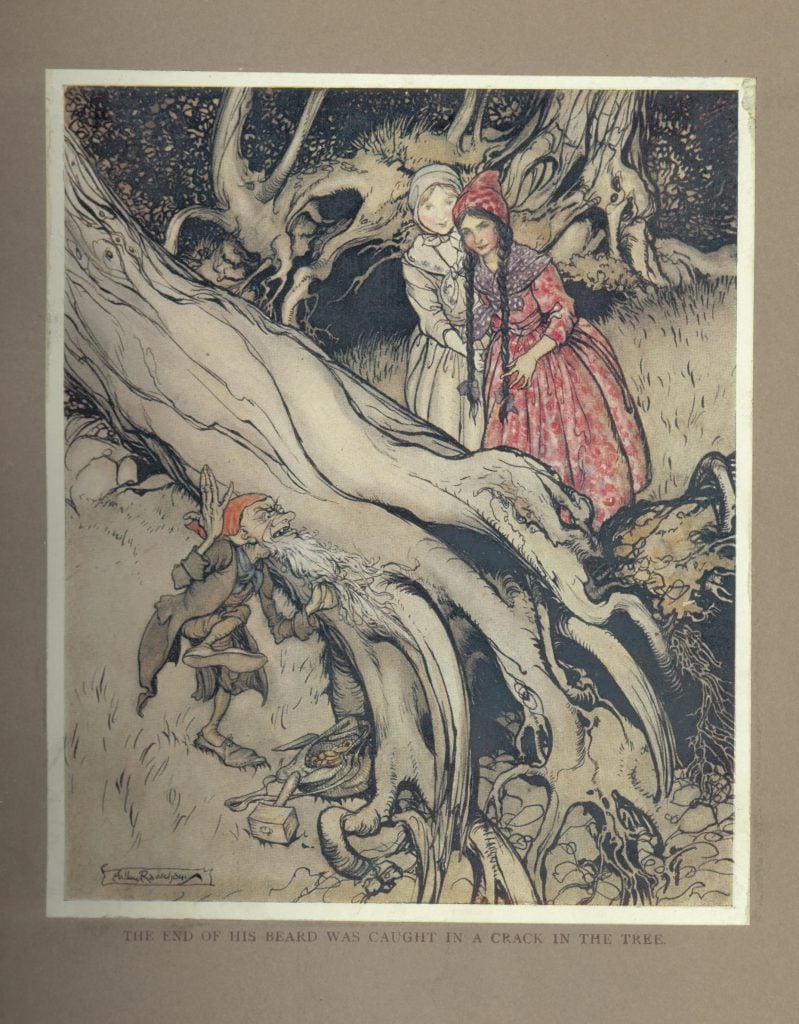
Snow White and Rose Red, from Little brother and little sister and other tales
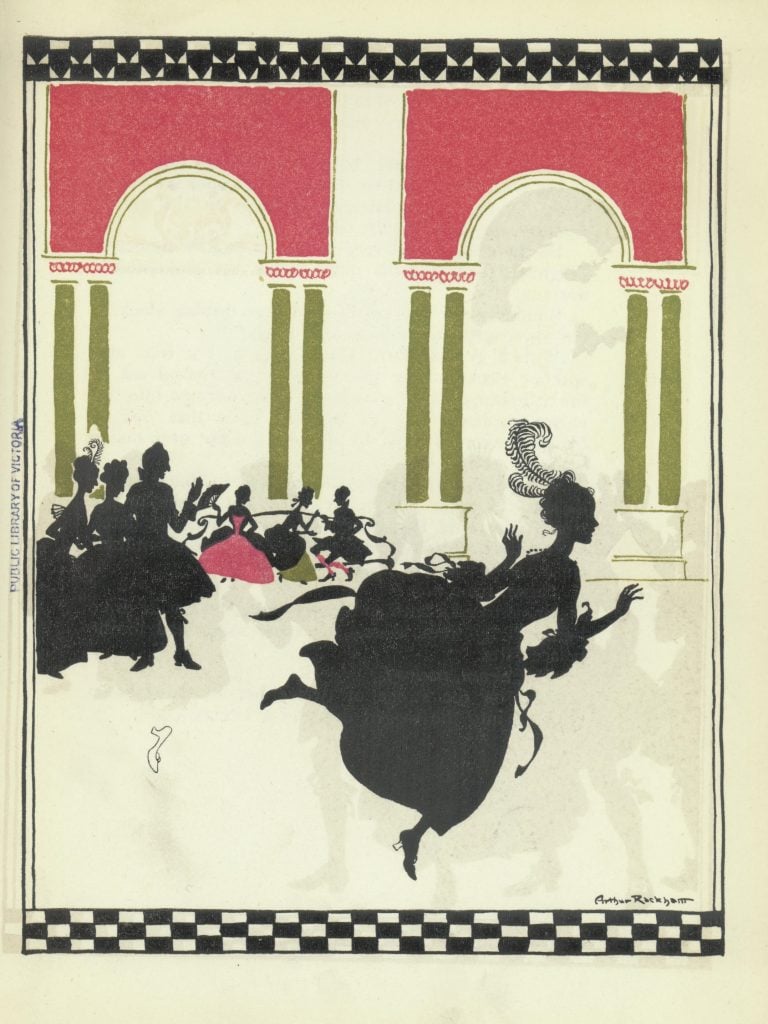
Cinderella fleeing the ball, from Cinderella by the Brothers Grimm
Rackham’s images became synonymous with fairy tales such as Hansel and Gretel, Snow White and Rose Red in Little brother and little sister and other tales. His illustrations for Cinderella combine the use of silhouettes, black and white drawings and colour images, a signature of the gift book trade in the first decades of the 20th century.

Undine as an infant under sea, from Undine
Less known is Undine, the story of the Knight Huldbrand of Ringstetten who marries the water sprite Undine. The protagonist achieves immortality through her marriage but when her husband, believing she is dead, remarries Undine’s kiss fulfils a prophesy and his life is forfeited.
We celebrate the close of Rackham’s career through his illustrations for Kenneth Grahame’s Wind in the willows. His affection for Grahame’s book is apparent in the thoughtful and humorous illustrations that accompany this text. The final one of the 16 plates was completed shortly before Arthur Rackham’s death.
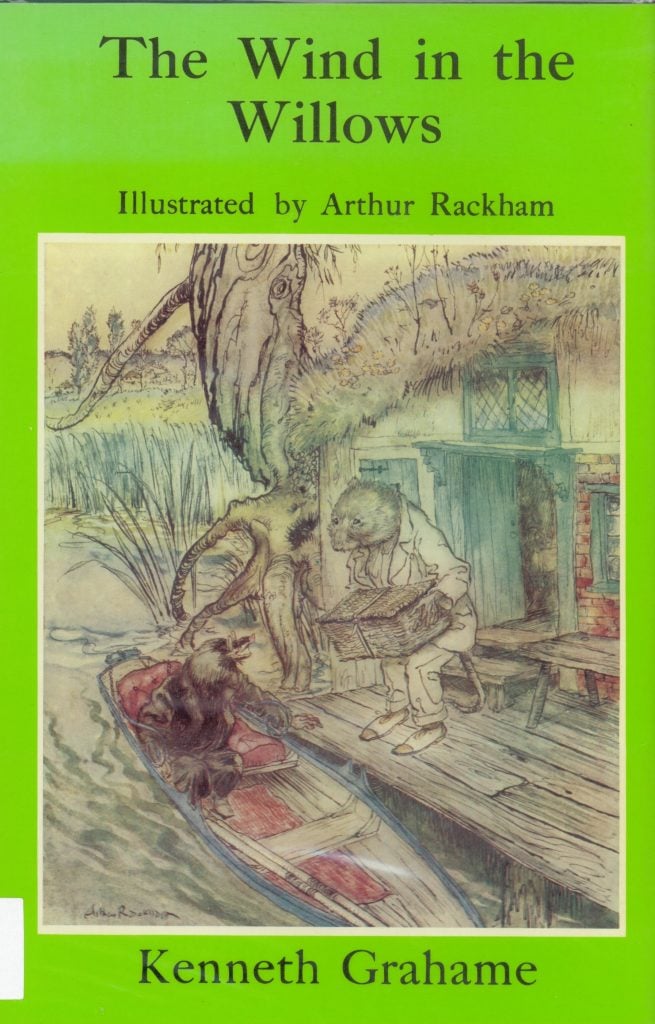
Cover, of Wind in the willows by Kenneth Grahame
References
- Arthur Rackham: A life with illustration, by James Hamilton, London, Pavilion, 1990.
- The Golden Age of children’s book illustration, by Richard Dalby, London, Michael O’Mara Books Ltd, 1991.
- Illustrating Camelot, by Barbara Tepa Lupack with Alan Lupack, Cambridge, Brewer, 2008.
- Illustrators: Arthur Rackham JVJ Publishing
- Arthur Rackham: Society of Illustrators
To pursue more research on the Library’s Children’s Literature Research Collection go to the Children’s Literature Research Guide


Juliet O’Conor – They are breathtaking. I remember, when I was a child and would sit for hours gazing at these, searching for the tiniest enchanting detail, such as a hidden smile amongst the bark on a tree – or similar. They brought the stories to life, especially Hansel & Gretel. Thank you.
Hi Nancy, Rackham’s artwork is endlessly fascinating. The more you look the more you see and understand his skill, humour and creativity. Glad you like the blog. Cheers, Juliet